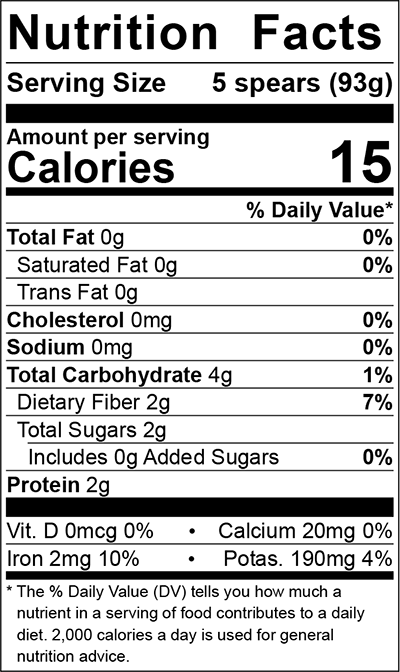

The percentage of active components varies according to each part of the plant. Asparagus has significant levels of polyphenols and especially those of the flavonoid family ( Fan, 2015 Symes, 2018 Zhang, 2019 ).This is caused by an amino acid: asparagusic acid ( Mitchell, 2014 ) which, during digestion, is converted into methyl-mercaptan.ĬOMPOSITION CHARACTERISTICS (excluding macronutrients, vitamins and minerals) Luckily, this goes away after a couple of hours ( Facius, 2019 ). After eating asparagus, most people notice their urine has a distinctive odour, more or less marked according to the individuals.Green asparagus is less fibrous than the white one due to its faster growth cycle ( Source: Chambre d’agriculture des Bouches-du-Rhône, 2015 ).To turn green, it needs to be exposed to light ( Source: Chambre d’agriculture des Bouches-du-Rhône, 2015 ). Asparagus is an underground or flowering bud also called a shoot.The Argenteuil asparagus, cultivated in the Île-de-France region, as well as the sands asparagus from the Landes region are the two most widely known varieties ( Source: French Ministry of Agriculture, 2020).In France, it is primarily cultivated in the Val-de-Loire, the South-West and South-East area or the Alsace region.

Asparagus belongs to the Liliaceae family, Asparagus genus, from the officinalis species.It is usually cooked into various dishes, but it is especially enjoyed with eggs, e.g. Folk medicine uses it as a diuretic to treat kidney-related disorders. This plant is considered a viable crop for marginal rural regions because of its frugality. The plant's main edible part is its shoots. Wild asparagus has been collected from ancient times, and it is a commonly cultivated plant in the Mediterranean area. This type of asparagus grows in the wild and tends to be thinner and less productive than the other asparagus varieties. It has a more natural taste as it lacks both the high sugar content and antioxidants in the cultivated types. The wild asparagus is endemic to Western Europe, has a different genetic profile, and tastes differently from garden asparagus. This plant's less familiar names are Chinese asparagus, wild asparagus and lesser asparagus. Acutifolius is derived from the Latin words acutus (acute), and folius (leaved), and refers to the characteristic shape of the leaves. Wild asparagusĪsparagus acutifolius – commonly known as wild asparagus – is an evergreen perennial plant. Sweet taste, to be eaten raw or stir-fried. The first unique purple 100% male purple asparagus in the world. The Erasmus variety has a deep purple hue. It is considered a connoisseur's selection of asparagus with a refined sweet flavour which becomes mildly nutty when cooked. The Purple Passion variety is grown in California and has specks of green on its purple crowns. Pacific Purple also has a significantly lower fibre content which means it can be eaten both raw and cooked almost whole. The Pacific Purple variety, originally from New Zealand, is high yielding, sweeter and much more tender than the green asparagus varieties. Purple asparagus comes in three main varieties: Pacific Blue, Purple Passion and Erasmus. Thick stalks tend to be woody, pungent, meaty, and fibrous, while thin stalks are soft, tender, and crunchy. The stalk thickness of purple asparagus can vary. When cooked, purple asparagus loses its colour and resembles a blend of artichoke and almonds. Purple asparagus is mild in flavour but sweeter and nuttier than green asparagus as it has a higher content of natural sugars than other asparagus varieties. Purple asparagus gets its colour from high levels of anthocyanins, chemical compounds commonly found in vegetables and other plants. Purple asparagus is originally from the Liguria region of Italy but is now also grown in many other countries.


 0 kommentar(er)
0 kommentar(er)
